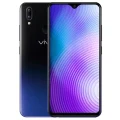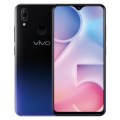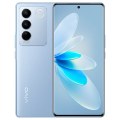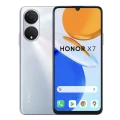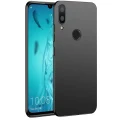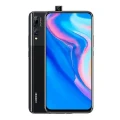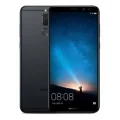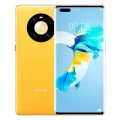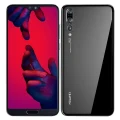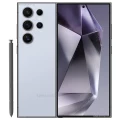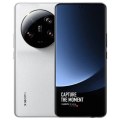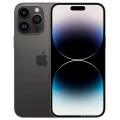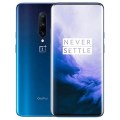Vivo Y53
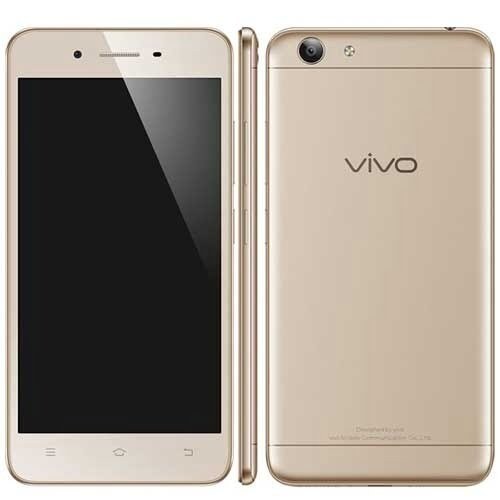


Vivo Y53 Price in Bangladesh
The Vivo Y53 Price in Bangladesh is BDT 8,990. This budget-friendly smartphone features a 5.0-inch IPS LCD display and is powered by a 1.4 GHz Qualcomm MSM8917 Snapdragon 425 Quad-core processor, ensuring smooth performance for everyday tasks.
With 2GB of RAM and 16GB of internal storage, the Vivo Y53 can be expanded up to 256GB using external storage, providing ample space for your apps and media. The device is equipped with an 8MP rear camera and a 5MP front camera, perfect for capturing photos and selfies. A standard 2500mAh Li-ion battery powers the device, making it a practical choice for users seeking an affordable smartphone with essential features. The Vivo Y53 Price in Bangladesh reflects its value as a reliable option for budget-conscious consumers.
Specifications
General
| Model | Vivo Y53 |
| Announced | 2017, March |
| Released | 2017, March |
| Status | Available |
Design
| Dimensions | 144.2 x 71.4 x 7.6 mm (5.68 x 2.81 x 0.30 in) |
| Weight | 137 g (4.83 oz) |
| Colors |
Crown Gold, Matte Black |
Network
| Technology | GSM / HSPA / LTE |
| 2G Network |
GSM 850 / 900 / 1800 / 1900 - SIM 1 & SIM 2 |
| 3G Network |
HSDPA 850 / 900 / 2100 |
| 4G Network |
LTE band 1(2100), 3(1800), 5(850), 40(2300) |
| GPRS <strong>GPRS</strong> (General Packet Radio Service) is a packet oriented mobile data service on the 2G and 3G cellular communication system's global system for mobile communications (GSM), Generally, GPRS is used for the purpose of wireless data transfer, such as sharing pictures and videos or browsing the Internet via a mobile phone connection. | |
| EDGE <strong>EDGE</strong> (Enhanced Data GSM Environment) is a wireless network technology generally considered the next step in the 2G network offers data transfer rates up to four times faster than ordinary GSM networks, Generally, EDGE is used for the purpose of wireless data transfer, such as sharing pictures and videos or browsing the Internet via a mobile phone connection. | |
| Speed | HSPA 42.2/5.76 Mbps, LTE Cat4 150/50 Mbps |
Display
| Display Type <strong>Display Technology => </strong> A number of display technologies and types used in mobile phones => TFT (Thin Film Transistor), IPS (In-Place Switching), OLED (Organic Light Emitting Diode), AMOLED (Active-Matrix Organic Light-Emitting Diode), Super AMOLED (an even advanced version of AMOLED), Resistive Touchscreen (Resistive touchscreens contain two layer of conductive material with a very small gap between them which acts as a resistance), Capacitive Touchsceen (Capacitive touchscreen technology consists of a layer of glass coated with a transparent conductor) | IPS LCD capacitive touchscreen, 16M colors |
| Size | 5.0 inches, 68.9 cm2 (~66.9% screen-to-body ratio) |
| Resolution | 540 x 960 pixels, 16:9 ratio (~220 ppi density) |
Camera
Main camera
| Camera Setup | 8 MP, AF, f/2.0 |
| Primary <strong>Camera</strong> is able to capture photographs and usually videos, The most important characteristics of a camera are the resolution (measured in megapixels), lens focus type (fixed or automatic), higher megapixel cameras are known to capture higher quality photos, but not always a good measurement of the photos quality. |
LED flash, HDR |
| Features |
720p@30fps |
Selfie camera
| Camera Setup | Single |
| Primary <strong>Camera</strong> is able to capture photographs and usually videos, The most important characteristics of a camera are the resolution (measured in megapixels), lens focus type (fixed or automatic), higher megapixel cameras are known to capture higher quality photos, but not always a good measurement of the photos quality. |
5 MP, f/2.2 |
Hardware
| Chipset <strong>Chipset</strong> is a group of integrated circuits designed to perform one or a more dedicated functions, often with real time computing constraints, Popular smartphones are equipped with more advanced embedded chipsets that can do many different tasks depending on their programming. | Qualcomm MSM8917 Snapdragon 425 (28 nm) |
| CPU <strong>CPU</strong> (Central Processing Unit) mostly known as processors, CPU processes instructions in order to carry out certain functions that make your device operate properly. Processors are often described as the brain of computers, smartphones and tablets, Smartphones and tablets rely on processors to carry out their every task, Processors are an incredibly important factor in selecting any type of computing device, including your smartphone. | Quad-core 1.4 GHz Cortex-A53 |
| GPU <strong>GPU</strong> (Graphics Processing Unit) is a single-chip processor designed to rapidly manipulate and alter memory to accelerate the creation of images in a frame buffer intended for output to a display, This includes things such as lighting effects, object transformations, and 3D motion. | Adreno 306 |
| RAM (Memory) <strong>RAM</strong> (Random Access Memory) is a type of computer memory that can be accessed randomly, any byte of memory can be accessed without touching the preceding bytes that allows information to be stored and accessed quickly from random locations. RAM is the most common type of memory found in computer systems, smartphones, tablets and other electronic devices. | 2 GB RAM |
| Internal Storage <strong>Internal Storage</strong> is a data storage space (flash memory) mostly used in smartphones, tablets and other electronic devices where operating system, apps, music, photos, videos, files and other user data Is stored. | 16 GB |
| Sensors <strong>Sensors</strong> are electronic components that detects and responds to some type of input from the physical environment. The specific input could be light, heat, motion, moisture, pressure and location, The output is generally a signal that is converted to use in computing systems, a location sensor, such as a GPS receiver is able to detect current location of your electronic device. |
Accelerometer, proximity, compass |
Connectivity
| Bluetooth <strong>Bluetooth</strong> is a wireless communications technology for exchanging data between mobile phones, headsets, computers and other network devices over short distances without wires, Bluetooth technology was primarily designed to support simple wireless networking of personal consumer devices. | 4.2, A2DP, LE |
| Infrared <strong>Infrared</strong> connectivity is an old wireless technology used to connect two electronic devices. It uses a beam of infrared light to transmit information and so requires direct line of sight and operates only at close range. | |
| USB | microUSB 2.0, USB On-The-Go |
| GPS <strong>GPS</strong> The Global Positioning System is a satellite-based radio navigation system, GPS permits users to determine their position, velocity and the time 24 hours a day, in all weather, anywhere in the world, In order to locate your position, your device or GPS receiver must have a clear view of the sky. | Yes, with A-GPS, GLONASS, BDS |
| NFC <strong>NFC</strong> (Near field communication) is a set of standards for smartphones and similar devices to establish peer-to-peer radio communications with each other by touching them together or bringing them into proximity, usually no more than a few inches. |
Battery
| Battery Type <strong>Battery Type => </strong> Cell phones run on various kinds of batteries depending on the manufacturer, phone size or shape and features. There are basically four types of cell phone batteries => Lithium Polymer, Lithium Ion, Nickel Metal Hydride and Nickel Cadmium. | Non-Removable Li-Po |
| Capacity <strong>Battery Capacity</strong> is a measure (typically in Amp-hr) of the charge stored by the battery, and is determined by the mass of active material contained in the battery. The battery capacity represents the maximum amount of energy that can be extracted from the battery under certain conditions. | 2500 mAh battery |
Vivo Y53 Review: Is This Budget Smartphone Worth Your Money?
Introduction to the Vivo Y53
In the bustling smartphone market, finding a balance between performance, affordability, and design can be a challenge. Enter the Vivo Y53, a budget-friendly option that promises to deliver on multiple fronts. Designed for tech enthusiasts, smartphone shoppers, and mobile gamers, this phone aims to offer an impressive package without breaking the bank. In this comprehensive review, we’ll explore the Vivo Y53’s key features, performance, and overall value. Whether you’re looking for a new device or simply curious about this budget smartphone, we’ve got you covered.
Design and Build Quality
When it comes to design, the Vivo Y53 stands out with its sleek and modern aesthetics. The phone boasts a slim profile and a lightweight build, making it easy to handle and carry around. The smooth, matte finish on the back adds a touch of elegance and ensures a comfortable grip.
The build quality is commendable for a budget device. The plastic body feels sturdy and well-constructed, with no creaks or weak points. The buttons are tactile and responsive, adding to the overall positive user experience. The Vivo Y53 also features a micro-USB port, a 3.5mm headphone jack, and a dual-SIM slot, catering to the needs of a wide range of users.
One of the standout design elements is the placement of the camera module. Unlike many budget smartphones that compromise on design to keep costs low, the Vivo Y53 integrates its camera seamlessly into the back panel. This not only enhances the phone’s aesthetic appeal but also ensures that the camera lens remains protected from scratches and damage.
Display and Visual Experience
The Vivo Y53 features a 5-inch IPS LCD display with a resolution of 960 x 540 pixels. While this may not be the highest resolution available, it offers decent clarity and color reproduction for everyday use. The screen’s brightness levels are adequate, making it usable even in outdoor settings with bright sunlight.
For mobile gamers and content consumers, the display provides a satisfactory experience. The colors are vibrant, and the viewing angles are wide, ensuring that you get an enjoyable visual experience whether you’re watching videos, browsing photos, or playing games. However, the lower resolution becomes noticeable when compared to higher-end devices, particularly when viewing detailed graphics or text.
The touch response is smooth and accurate, which is crucial for gaming and navigation. The Vivo Y53 also includes a blue light filter feature, reducing eye strain during prolonged use. This is a thoughtful addition, especially for users who spend a lot of time on their phones.
Performance and Battery Life
Under the hood, the Vivo Y53 is powered by a Qualcomm Snapdragon 425 processor, paired with 2GB of RAM. While this may not be the most powerful configuration, it is sufficient for basic multitasking and running everyday applications smoothly. For tech enthusiasts and mobile gamers, it’s important to manage expectations regarding performance, especially when handling resource-intensive tasks.
In terms of gaming performance, the Vivo Y53 can handle casual games like Candy Crush and Subway Surfers without any issues. However, more demanding games like PUBG Mobile may require you to lower the graphics settings for a smoother experience. The 16GB of internal storage, expandable via microSD, ensures that you have ample space for apps, photos, and videos.
Battery life is one of the highlights of the Vivo Y53. Equipped with a 2500mAh battery, the phone easily lasts a full day of moderate use. This includes browsing, social media, streaming videos, and light gaming. The efficient power management ensures that you won’t be scrambling for a charger halfway through the day. The included power-saving modes further extend the battery life, making it a reliable companion for users on the go.
Camera Capabilities
The Vivo Y53 is equipped with an 8MP rear camera and a 5MP front camera. While these specs may seem modest, the phone’s camera performance is quite impressive for its price range. The rear camera captures clear and detailed photos in well-lit conditions, with accurate color reproduction and minimal noise.
Low-light performance is where the Vivo Y53 shows its limitations. The lack of advanced image processing and a dedicated night mode means that photos taken in low-light settings tend to have more noise and less detail. However, for casual photography and social media sharing, the camera performs adequately.
The front camera is ideal for selfies and video calls. It includes features like Face Beauty mode, which enhances facial features and ensures you look your best in every shot. Video recording capabilities are also decent, with 1080p resolution at 30fps, making it suitable for capturing memorable moments on the go.
User Interface and Software
The Vivo Y53 runs on Funtouch OS, which is based on Android. The user interface is clean and intuitive, with a layout similar to iOS. This familiarity makes it easy for users transitioning from other platforms to get accustomed to the Vivo Y53 quickly.
Funtouch OS offers a range of customization options, allowing users to personalize their experience. You can change themes, wallpapers, and fonts to match your style. The interface also includes useful features like Smart Split, which enables multitasking by allowing you to run two apps simultaneously on the screen.
One of the standout software features is the App Clone functionality, which allows you to run two instances of the same app. This is particularly useful for social media enthusiasts who manage multiple accounts. Overall, the software experience is smooth and user-friendly, enhancing the overall appeal of the Vivo Y53.
Value for Money
One of the strongest selling points of the Vivo Y53 is its value for money. Priced competitively, this budget smartphone offers a range of features that are typically found in higher-end devices. For tech enthusiasts and smartphone shoppers on a budget, the Vivo Y53 provides a compelling package that balances performance, design, and affordability.
When compared to other devices in the same price range, the Vivo Y53 holds its own. The combination of a decent display, reliable performance, and good battery life makes it a worthy contender. While it may not have all the bells and whistles of flagship models, it delivers on the essentials, making it a practical choice for everyday use.
Conclusion
In conclusion, the Vivo Y53 is a budget smartphone that punches above its weight. With its sleek design, reliable performance, and thoughtful features, it caters to the needs of tech enthusiasts, smartphone shoppers, and mobile gamers alike. While it may have some limitations, particularly in terms of camera performance and display resolution, its overall value proposition makes it a worthy consideration for those seeking an affordable yet capable device.
Whether you’re looking for a secondary phone, a gift for a loved one, or simply a cost-effective smartphone, the Vivo Y53 is worth exploring. Share your thoughts in the comments below and engage with our content to discover more insights and reviews on the latest tech trends.
